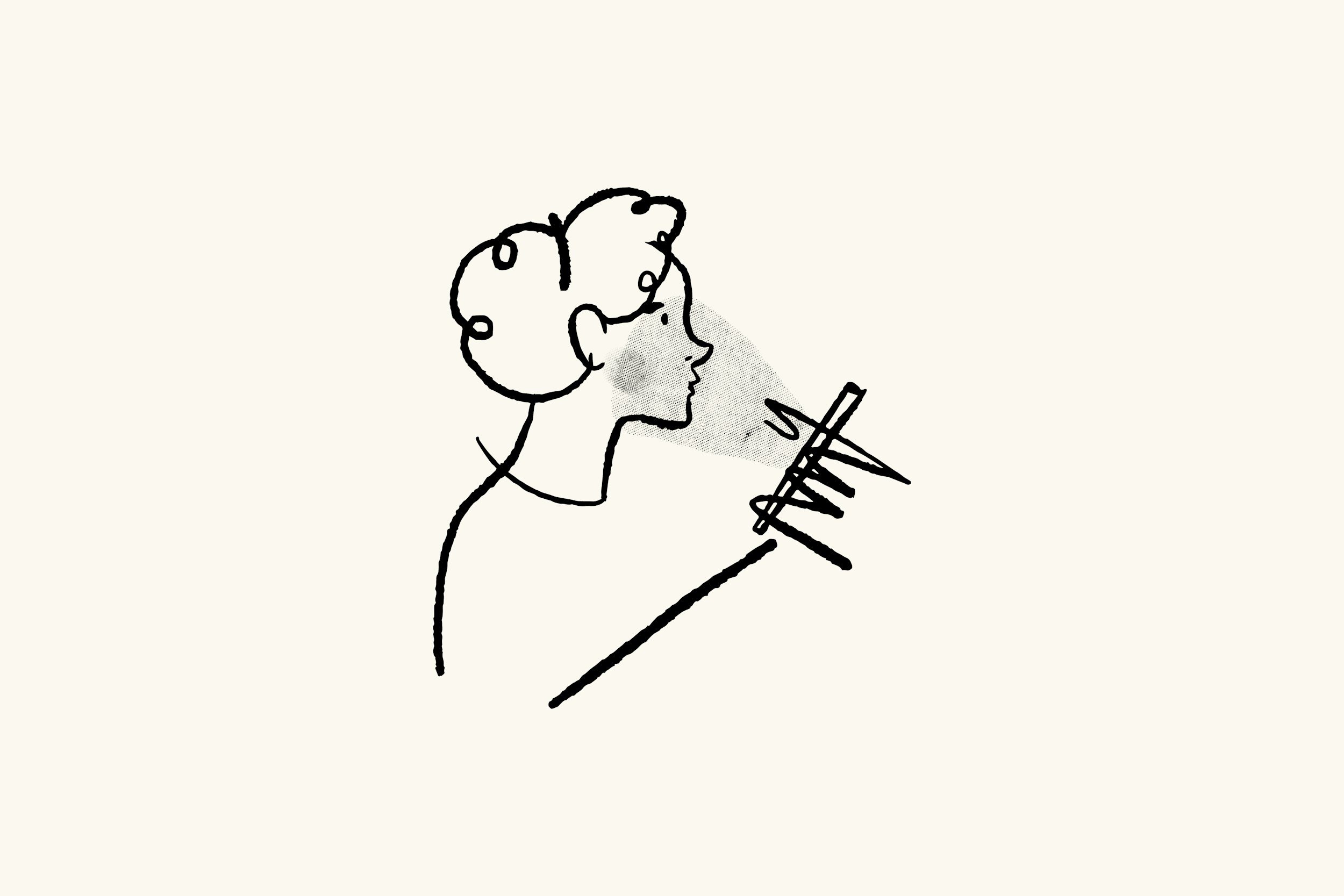The grant narrative has become one of the most high-stakes tools of communication in the nonprofit fundraising space, driving more than $150 billion in global expenditures. As grant writers adapt their appeals in response to changing funder values, this narrative network gives shape to the nonprofit ecosystem in which many arts organizations operate.
In the News: August 2022
Interactive Map: Who Received NEA Grants In 2016?
#TBT: A Guide to Web-Based Fundraising and Philanthropy
Web 2.0 has changed many aspects of the modern world, and fundraising and philanthropy is no exception. From the tidal wave of tech tycoons committing to the Giving Pledge to the rise of crowdfunding (and a bevy of potential platforms for a crowdfunder to choose from), soliciting essential funds has more avenues than ever--and more potential challenges along with them. This week's throwback rounds up numerous articles that provide time-tested wisdom on how to navigate in the new world of web-based fundraising and philanthropy.
Research Update: Google for Nonprofit Arts
In today’s culture, Google is seen as one of the most innovative technology companies in the world. From its search engine to the Android operating system, Google has permeated every aspect of our techno-centric lifestyles. Beyond the scope of their technological accomplishments, Google strives to help nonprofit organizations around the world by providing them with free online tools and access to grant monies. Follow the development of this research here.
Tips for Choosing a Grants Management System: Part 2
Throughout the process of selecting and implementing a grants management system (GMS), an arts organization must consider many factors in order to ensure positive results. These factors fall into four main categories: vendor interviews, data migration, integration, and training. All of equal importance, these categories must be weighed to find the optimum balance of system features and vendor characteristics.
Today we focus on the last two categories—integration and training. To read the first part of this two-part series, click here.
Tips for Choosing a Grants Management System: Part 1
Throughout the process of selecting and implementing a grants management system (GMS), an arts organization must consider many factors in order to ensure positive results. These factors fall into four main categories: vendor interviews, data migration, integration, and training. All of equal importance, these categories must be weighed to find the optimum balance of system features and vendor characteristics.
Today we focus on the first two categories—vendor interviews and data migration.
National Satisfaction with GMS Software
Today, an administrator has the ability to manage the entire granting lifecycle through a grants management system (GMS), including applicant relations, panelist reviews, and fund distributions. Online storage available through cloud computing and software with fewer hardware requirements have increased GMS product capabilities. And the ability for a GMS to interact with other systems, such as payment portals and accounting systems, has further made management of the grant lifecycle within a GMS easier. For many of today’s grant-making organizations, GMS software is an essential tool in day-to-day activities.
Opera America: Celebrating 13 Companies’ Strategies for Audience Development
This week, Opera America announced the thirteen opera companies selected to share $300,000 in grants to support programs and projects that increase first-time opera attendance and return visits. The individual grants range from $7,500 to $30,000. The thirteen companies (and their projects) are:
Firing Up Museums With Sparks! Ignition Grants
 From digital archiving techniques to mobile websites, museums around the country are finding news ways to innovate in our current and rapidly changing information age. There is now an emphasis on experimentation and testing the boundaries of what traditionally defines a museum.
The Institute of Museum and Library Services (IMLS) has initiated a new grant program with this emphasis in mind and is seeking proposals for the current fiscal year. The Sparks! Ignition grants can be up to $25,000, are available for a period of up to one year, and have no matching requirements. Yes, you read that correctly. No matching requirements.
From digital archiving techniques to mobile websites, museums around the country are finding news ways to innovate in our current and rapidly changing information age. There is now an emphasis on experimentation and testing the boundaries of what traditionally defines a museum.
The Institute of Museum and Library Services (IMLS) has initiated a new grant program with this emphasis in mind and is seeking proposals for the current fiscal year. The Sparks! Ignition grants can be up to $25,000, are available for a period of up to one year, and have no matching requirements. Yes, you read that correctly. No matching requirements.
The Sparks! Ignition program is intended for all eligible institutions that want to utilize innovative methods to address some of the current problems that museums and libraries in the U.S. are experiencing. For more information about the application and to find out if your institution meets the criteria for eligibility, visit the IMLS website .
On November 3rd, IMLS staff will be offering a webinar explaining the purpose of the grants, articulating the application process, and answering questions. Your organization will have to move quickly though, the application deadline for all Sparks! grants is November 15th, 2010.
Social Media, Funding & Prom Queens
American Express recently started a grant program funding arts organizations through online voting instead of traditional non-profit success metrics. Quality of art, financial stability, and community impact were not the deciding factor in who received a $200,000 grant this summer, votes were. In a scene reminiscent of American Idol or Dancing With the Stars, arts organizations compete for the grand prize. Twitter, Facebook, and E-mail, took center stage as organizations launched their online campaigns. A competition was born and America voted to determine the winner.
American Express’s use of the high school prom queen method to choose a winner evokes many new questions for funders and fundraisers alike:
- Does the idea of a contest remove art from arts funding?
- Is the best organization being rewarded?
- Is this a popularity contest or a social media war?
- How do you send a message for support without degrading the integrity of your opponents?
- How will social media be affected through this type of funding?
Galloping ahead of many traditional forms of communication, technology and social media have taken the arts community by storm over the last few years. This contest adds yet another facet to their use: fundraising. With the voting apparatus hosted online, social media makes perfect sense as the advertising weapon of choice, but is this a good choice for the arts?
Building communities, starting conversations, and sharing information top the list of ‘the best ways to use Social media.’ Advertising and sales lead the least effective uses. In an attempt to gain votes, organizations risk alienating their supporters through using inflammatory messaging or hyper focusing on their votes and forgetting the online communities they created.
Bashing the competition, touting superiority, or focusing on why one organization ‘needs the money more’ represent strategies and messaging that could easily be adopted. These messages are uncomfortable for many people and can fracture the arts community. However, without competitive messaging the prize would simply go to the organization with the highest online presence, essentially starting the contest on an unfair playing field.
Assuming an organization crafted an effective campaign without causing any damage, the biggest question still remains unanswered. Should grants be determined by popular vote?
On one hand supply and demand compose the framework of the funding structure. The organization with the highest public demand receives a reward to create more art. On the other hand, many see this as a popularity contest with the biggest flashiest organizations gaining a clear advantage. Unfortunately, art comprises no part of either approach. This funding model is not based on the organization, what they do, who they do it for, or why they do it: a counterintuitive approach in my opinion.
While increased online support and a focus on technology use to reach constituents could provide benefits in this funding model, the prom queens method of distributing support should probably be left where it belongs: high school. This model has no way of insuring the best organizations reap the rewards or that the most efficient and effective programs receive funding. Popularity does not always equal quality, but it will always decide the winner in this funding model.
Which Vendor? Simplifying Online Grant Applications
Does anyone actually enjoy the grant writing process (aka the most frustrating, time consuming, and essential activity virtually every arts organization must go through at least once a year)? To those of you who enjoy all the paperwork, I salute you. For everyone else, I’m sure you will agree that the development of online grant systems have been a tremendous asset over the past several years. Unfortunately, they do not always simplify the process. Passwords are forgotten, the grantee cannot preview the full application, every year the same information must be reentered, supplemental files are unable to attach, and heaven forbid there are not enough opportunities to save work. Grantmakers, on the other hand, have to deal with potential duplicates in the database, an inability to format or customize applications, interim reports that are not integrated with the original application, and hundreds of applications from organizations and individuals who are not even eligible for their funding.
With all of these potential hassles and multiple vendors to choose from, how can grant makers possibly ensure they select the online grant application system that will work best for them?
Thanks to another informative report from Idealware, vendor selection does no longer have to be such a completely overwhelming process.
“Streamlining Online Grant Applications: A Review of Vendors” is a collaborative effort between Idealware, Project Streamline and the Grants Managers Network to assist grant makers in comparing various systems against the same criteria.
Vendors reviewed in the report include:
- EasyGrant by Altum
- eGrant* by Bromelkamp
- WebGrants by Dulles Technology Partners
- Grant Lifecycle Manager by Foundant Technologies
- IGAM by MicroEdge
- Common Grant Application by Ocean Peak
- PhilanTrack by PhilanTech
It is important to note that the review’s main focus was not every specific functionality of each vendor, but rather those features which best reduced the administrative burden, such as:
- Getting Started: Ease for Applicant
- Getting Started: Reuse of Information
- Overall Ease of Use
- Good Form Design: Self Service
- Flexibility of Forms
- Support for Multiple Stages
- Information Sharing: Collaboration
- Information Sharing: Data Export/ Access
- Product Background
I would not recommend making a decision based on just the paragraph summaries of each system, which did not always compare the same criteria. Instead, take the time to look through the complete report wherein each system is evaluated in the above categories through various “essential standards” and “gold standards.” These include elements as simple as required fields and word counter to things as complex as branch logic and extranet capabilities. Additionally, further information is included in the full report, such as costs, technical setup, technical support, current number of clients, and product history.
Although the systems reviewed in this report are not the only tools available, this report is a great starting point and resource for all grantmakers looking to simplify their grant application process.
For more detailed information, download the full report from Idealware for free!
*eGrant began as a product of the Center for Arts Management and Technology, home of this blog













